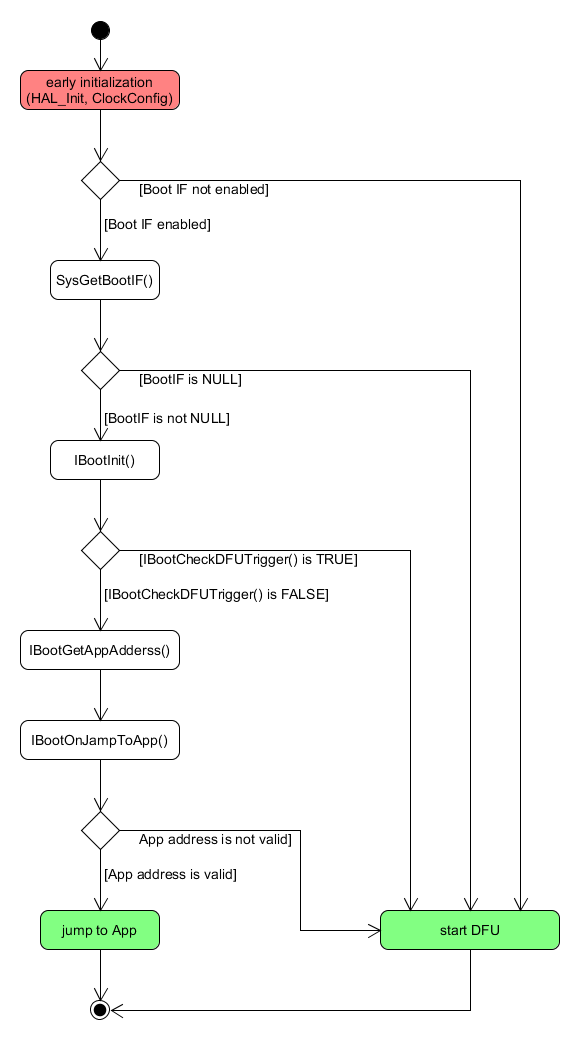 |
eLooM for STM32 application
v3.3.0
A framework for multitasking low power embedded applications powerd by STM32
|
 |
eLooM for STM32 application
v3.3.0
A framework for multitasking low power embedded applications powerd by STM32
|
The Boot interface integrates support for the bootloader into the framework. More...
#include "services/eloom_sysbase.h" Include dependency graph for IBoot.h:
Include dependency graph for IBoot.h: This graph shows which files directly or indirectly include this file:
This graph shows which files directly or indirectly include this file:Go to the source code of this file.
Typedefs | |
| typedef struct _IBoot | IBoot |
Functions | |
| static sys_error_code_t | IBootInit (IBoot *_this) |
| static boolean_t | IBootCheckDFUTrigger (IBoot *_this) |
| static uint32_t | IBootGetAppAdderss (IBoot *_this) |
| static sys_error_code_t | IBootOnJampToApp (IBoot *_this, uint32_t nAppDress) |
The Boot interface integrates support for the bootloader into the framework.
This interface is implemented by applications that need to jump to another application during the startup sequence. The typical example is a bootloader. The IBoot interface is used by the system during the startup before the scheduler is running (this means that there is not INIT task yet). The algorithm is displayed in Fig. 16.

The system reset all peripherals and it initializes the minimum set of resources (like the clock three). At this point if the SysInit() has been called with the parameter TRUE the system uses the SysGetBootIF() in order to obtain a pointer to an application object that implement the IBoot interface. Then the system initialize the Boot IF by calling the IBootInit() function. The the system check if the DFU trigger condition - IBootCheckDFUTrigger(). If it it is FALSE then the system prepare the jump to the application. First it retrieves the jump address by calling the IBootGetAppAdderss() function. Then it uses the IBootOnJampToApp() in order to perform some other tasks before the jump. Finally the system check if the application address is valid and make the jump.
In order to optimize the memory footprint of the framework the IBoot interface can be disabled by the linker with the following definition:
#define INIT_TASK_CFG_ENABLE_BOOT_IF 0
It can be added in the sysconfig.h file.
Copyright (c) 2017 STMicroelectronics. All rights reserved.
This software is licensed under terms that can be found in the LICENSE file in the root directory of this software component. If no LICENSE file comes with this software, it is provided AS-IS.
|
inlinestatic |
Check if the DFU condition occurs. If it is TRUE the bootloader enters the DFU mode,
| _this | [IN] specifies a pointer to the object. |
|
inlinestatic |
Used by the system to retrieve the address of the application to start.
| _this | [IN] specifies a pointer to the object. |
|
inlinestatic |
Initialize the interface IBoot. It should be called after the object allocation and before using the object.
| _this | [IN] specifies a pointer to the object. |
|
inlinestatic |
Called by the system before the jump to the other application. It can be used to perform some operations before the jump and also to stop the system from jump,.
| _this | [IN] specifies a pointer to the object. |
| nAppDress | [IN] specifies the address of the application to start. |